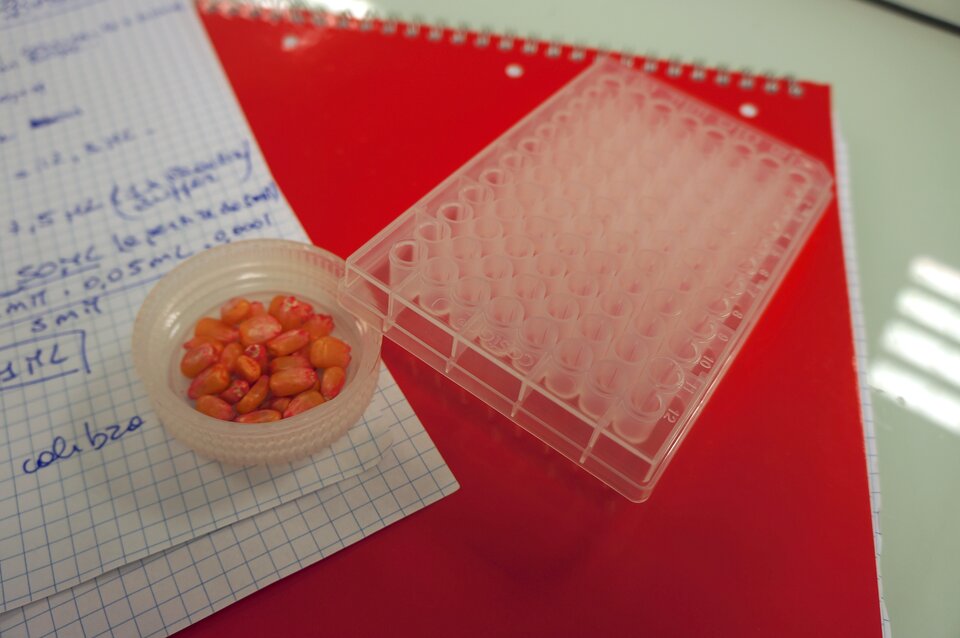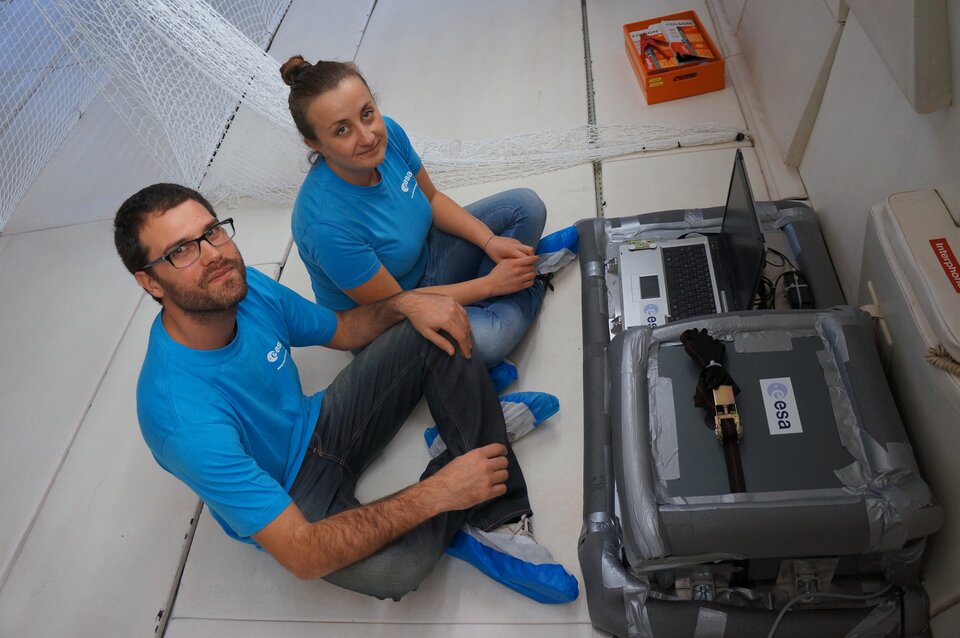Meet the teams
Three teams of postgraduate students flew their experiments during the 2012 'Fly Your Thesis!' campaign. Here is an introduction to the team from Florence, Italy.
![]()
LINVforROS team – Reactive oxygen species (ROS) production in plants during gravity changing conditions![]()
![]()
| University | University of Florence |
| Endorsing professor |
Stefano Mancuso University of Florence |
| Assistant scientist |
Elisa Masi University of Florence |
| Team |
Diego Comparini Emanuela Monetti |

This student experiment aims to detect coordinated variations in reactive oxygen species production in the tissue of maize plants during cyclic changes in gravity.
Reactive oxygen species (ROS) have recently been identified as signalling molecules in plants and are typically produced under stressful conditions. Having spent millions of years evolving in Earth’s normal gravity, it is postulated that plants perceive microgravity and hypergravity as stressful conditions. Both conditions occur on a parabolic flight and have already been observed to alter the rate of ROS production.

The student team prepared several maize seedlings prior to the flight by incubating them in a liquid containing dyes. These dyes later permited the team to detect and locate the ROS production. The team made real-time measurements of ROS production in the airplane using a Tecan microplate reader which measured the absorbance of the plant tissue at certain wavelengths as well as its fluorescent emission spectrum. Coupled with the dyes used, these measurements will be used to determine the ROS production during both the microgravity and hypergravity segments of the flight.
After the parabolic flights, the maize plant tissues were immediately chemically fixed, preserving the samples as they were following microgravity and hypergravity exposure. Microscope analysis at the students’ home laboratory will allow the team to localise the production of ROS within the cells and tissues.
The team hypothesises that the increase in production of ROS during changing gravity levels may be related to increased oxygen consumption by the plant tissue.
Read more about this experiment on the ERASMUS Experiment Archive.
Learn more about this experiment in the team's final report.



